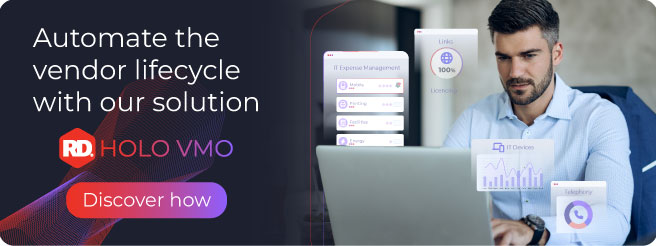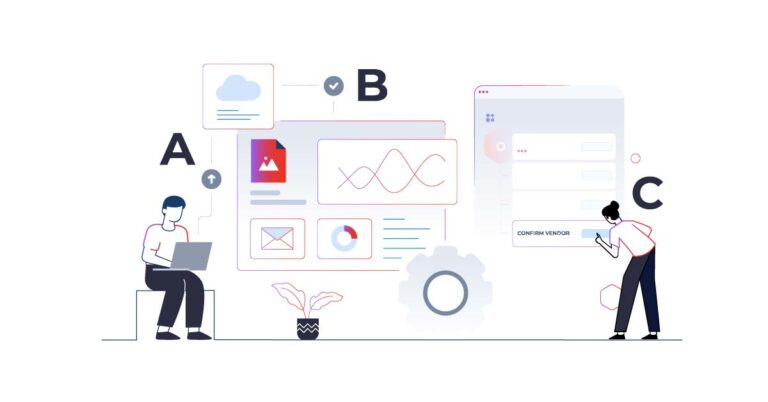Vendor Onboarding: Guide to a Successful Process + Checklist
Reading: 3 mins.
Vendor onboarding is a critical process for managing a company’s vendor portfolio. This process facilitates building a stronger relationship with the vendor, allows the collection of pertinent information, and promotes effective collaboration between both parties.
What is vendor onboarding?
Vendor onboarding is the process of integrating a new vendor into the company. This process includes gathering information about the vendor, defining expectations, and creating an integration plan. During this process, vendors answer questions and deliver documents as needed, while receiving guidance on the company’s processes and expectations. This will allow you to work together productively, reducing risk, and increasing the value of the partnership, and the company’s competitive advantage.
Benefits of a successful vendor onboarding process
A successful onboarding plan plays a crucial role in the overall vendor experience. If it is not part of your company’s vendor relationship management approach, it probably should be. Establishing a smooth process for onboarding offers multiple benefits:
✓ Increased efficiency and profitability: Reduces costs, increases productivity, and aligns goals.
✓ Risk Management: Reduces and identifies risks and ensures future compliance, validation, and strategies to protect your business.
✓ Stronger relationships: Empowering partnerships that guarantee success through effective onboarding and constant communication.
✓ Strengthens the brand: Empowers the reputation through high-performing vendors and strong relationships that generate trust and satisfaction in customers, shareholders, and employees.
Impulse todas las capacidades de
su
Gestión de Proveedores
3 key steps for the vendor onboarding process
1. Information exchange and document verification
In the initial stage of the process, both companies get to know one another and a lot of information is exchanged. Some data is indispensable for immediate review, while others can be archived for future reference. Striking a balance between the time invested and the benefits gained is crucial.
Information you should provide to vendors:
- Mission, vision, and values of your company.
- Vendor code of conduct.
- Company overview.
- Project background, challenges, and goals.
- Billing contact information.
- Ways to leave feedback.
Sample vendor documentation you may need to collect:
- Company ownership documentation
- Tax information, forms, and identification numbers.
- Non-disclosure agreements (NDAs).
- Insurance policies.
- Vendor diversity certifications.
- Sustainable sourcing reports.
- Subcontractors, outsourced functions, and fourth-party vendors.
- Financial records/credit history.
- Security certifications.
- Regulatory compliance information.
- Required business licenses.
Logre un Scoring de Proveedores con HOLO Vendor Management
2. Aligning people, processes, and approach
Collaboration will play a crucial role in the overall success of the partnership with the vendor. Therefore, schedule short and informal introductory meetings between the key stakeholders who will be working together.
Consider connecting your department stakeholders with their counterparts in the vendor’s organization. For example, connect your accounts payable representative with the vendor’s accounts receivable contact. Remember to adjust this stage according to the importance and value of the partnership. Although key stakeholders may not need to meet and greet each other on the phone, make introductions by email to ensure clear communication.
During these meetings and discussions, ask questions, get to know the other party, and plan your approach.
Key questions for process planning:
- Who are the key internal stakeholders and vendor contacts for your account?
- What roles do they play and with whom will they interact?
- Who will have access to company data?
- How will the vendor engage with users?
- Where should users go if they have questions?
3. Setting expectations and next steps
The last step in the vendor onboarding process is to share expectations and establish the next steps. This helps to ensure that both parties are on the same page and that the relationship will be successful.
Expectations should be clear and specific. It should include information on performance, communication, and collaboration. The following steps should be specific and measurable. They should include dates and responsible parties.
Vendor onboarding is a critical process for managing a company’s vendor portfolio. HOLO can help you manage your vendor lifecycle successfully with our platform, which automates tasks, centralizes information, and improves collaboration. Request your demo.









